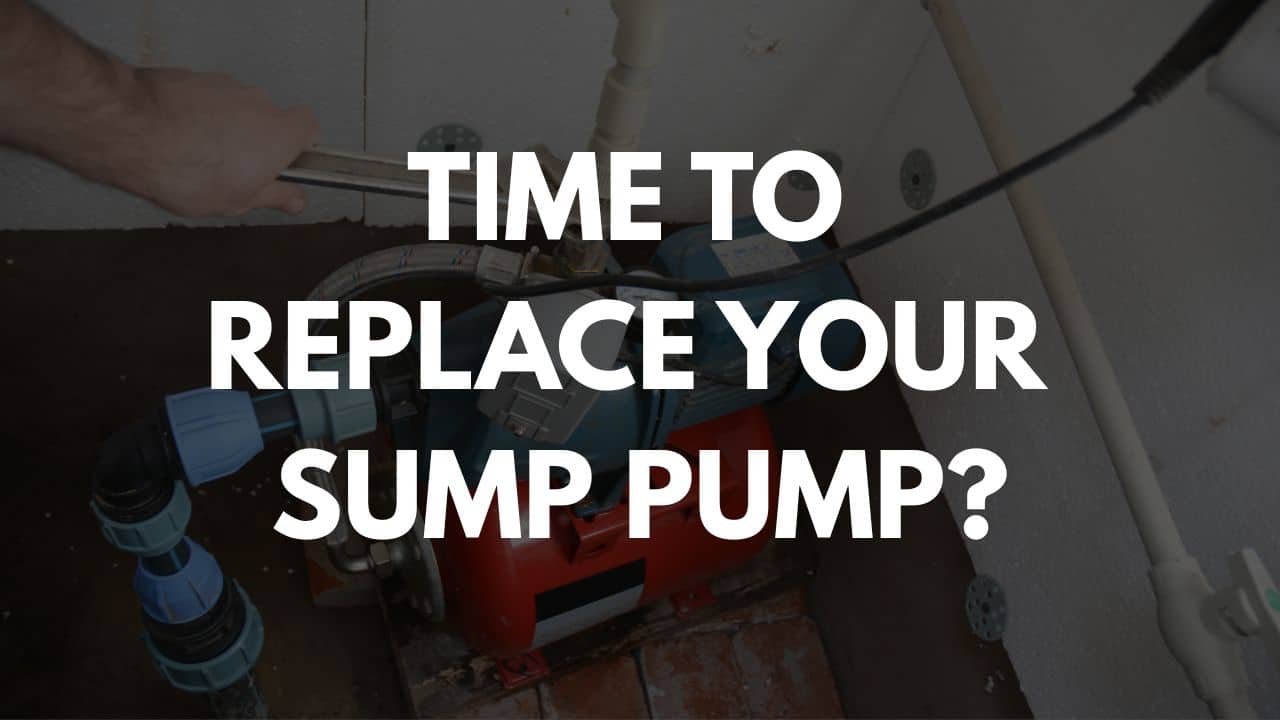As someone who’s replaced more sump pumps than I can count, I’ve learned one thing the hard way: you don’t want to find out your pump is dead during a storm. Knowing the signs of a failing sump pump and what to look for in a replacement can save you thousands in water damage and a whole lot of stress.
This guide breaks it down simply, based on years of real-world handyman experience.
⚡️ Warning Signs Your Sump Pump Is on Its Last Legs
1. Strange Noises
If your sump pump sounds like it’s grinding gravel, rattling, or whining, the motor or impeller may be worn or misaligned. New noises are never a good sign.
2. Constant or Short Cycling
Does your pump turn on and off frequently, even during light rain? That could mean a float switch issue, electrical problem, or an undersized basin.
3. Running Non-Stop
A sump pump that doesn’t shut off is either overwhelmed, stuck on due to a float malfunction, or failing to move water efficiently. This often means it’s near the end of its lifespan.
4. Visible Rust or Corrosion
Surface rust isn’t always fatal, but when you start seeing signs of corrosion on the motor, screws, or float switch, it’s only a matter of time before a failure.
5. Water in the Basement Despite the Pump Running
If your pump is operating but the pit is overflowing, it might not be pumping at full capacity anymore—a classic sign of internal wear or blockage.
6. Frequent Tripping of Breakers or GFCI
This could mean moisture is getting into the motor housing or there’s an electrical fault. Either way, don’t ignore it.
7. Age (7+ Years Old)
Most sump pumps have a life expectancy of 7–10 years with normal use. If yours is pushing that limit, replace it before you regret not doing it sooner.
🔍 What to Look for in a Replacement Sump Pump
Buying the right replacement pump isn’t just about picking the same one you had. Here’s what to consider:
✅ 1. Pump Type: Submersible vs. Pedestal
- Submersible: Quieter, more efficient, sealed for water exposure. Best for finished basements.
- Pedestal: Cheaper, easier to access/replace, but louder and more prone to tipping or clogging.
✅ 2. Horsepower & Flow Rate
- Most homes are fine with a 1/3 HP or 1/2 HP unit.
- Check GPH (gallons per hour) at 10 feet of lift to match your home’s needs.
✅ 3. Float Switch Design
- Vertical floats are reliable and compact.
- Tethered floats require more room and can tangle.
- Electronic switches are great for tight spaces and long-term reliability.
✅ 4. Material Build
- Cast iron = durable, long-lasting, dissipates heat well.
- Thermoplastic = cheaper, lightweight, less durable.
✅ 5. Check Valve Compatibility
Ensure your new pump either comes with or supports a proper check valve to prevent backflow and short cycling.
✅ 6. Warranty & Brand Support
Stick to brands like Zoeller, Liberty Pumps, Wayne, and Basement Watchdog for reliable service and warranty support.
🌧️ Bonus: Should You Add a Backup System?
If you’re replacing a pump, it’s a great time to add:
- Battery backup: Keeps you protected during power outages.
- Water-powered backup: Works without electricity, but requires high water pressure.
- Dual-pump setups: One primary, one backup in the same pit—solid peace of mind.
🤔 FAQ: Sump Pump Replacement Edition
Q: How long should a sump pump last? A: Typically 7–10 years with regular maintenance. Cheaper units may wear out sooner.
Q: Can I replace a sump pump myself? A: Yes—if you’re comfortable with basic plumbing and electrical connections. But know your limits. Improper installs can fail when you need them most.
Q: Should I upgrade from a pedestal to a submersible? A: If you want quieter operation and better performance, absolutely. Just make sure your pit is deep enough.
Q: Do all sump pumps need a check valve? A: Yes. A check valve stops pumped water from flowing back in and keeps your pump from short cycling.
Q: How do I test if my sump pump is working? A: Slowly pour water into the pit until the float activates. The pump should turn on, clear the water, and shut off smoothly.
A reliable sump pump is like a good insurance policy—you don’t think about it until you really need it. If you suspect yours is nearing the end, don’t wait. Catching problems early and replacing your pump proactively can prevent thousands in water damage and the headache that comes with it. Need help picking the right one or want me to install it for you? Just give me a shout.

